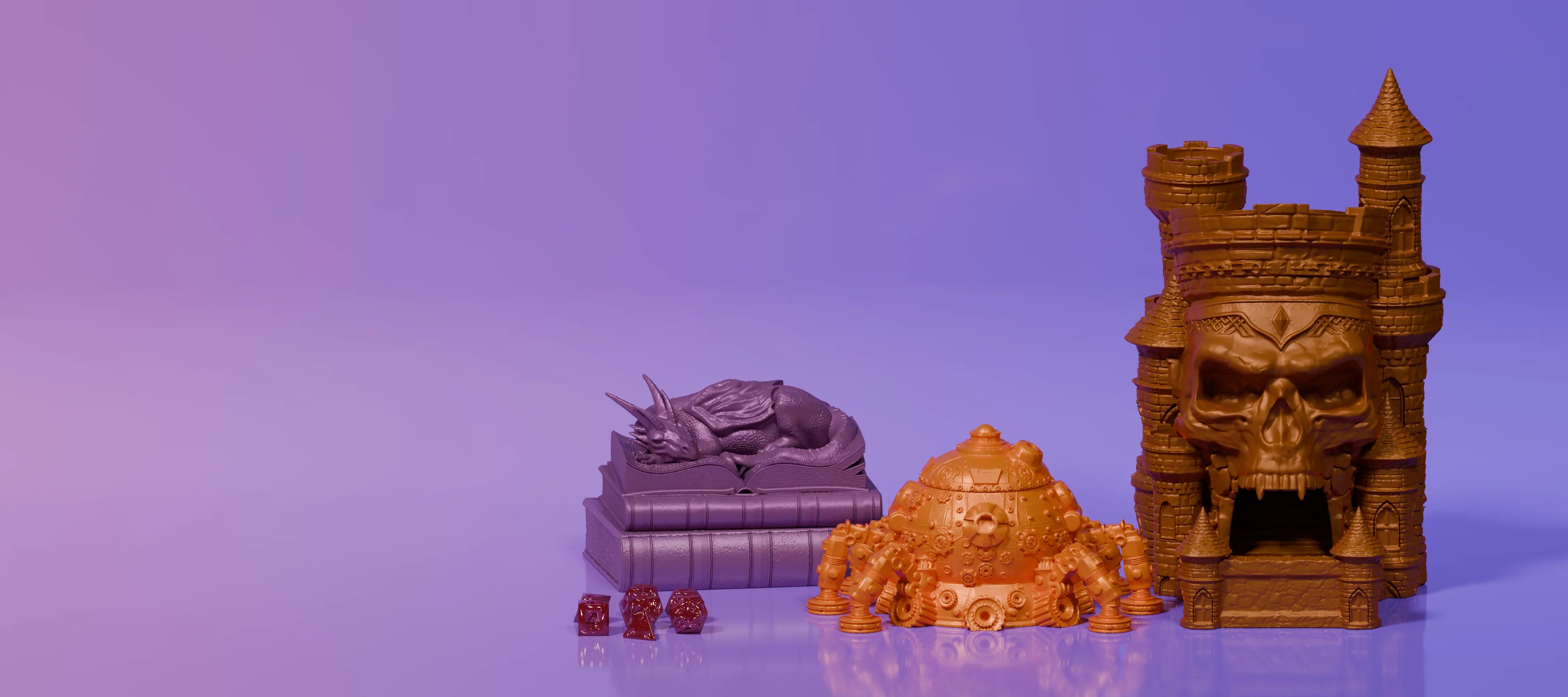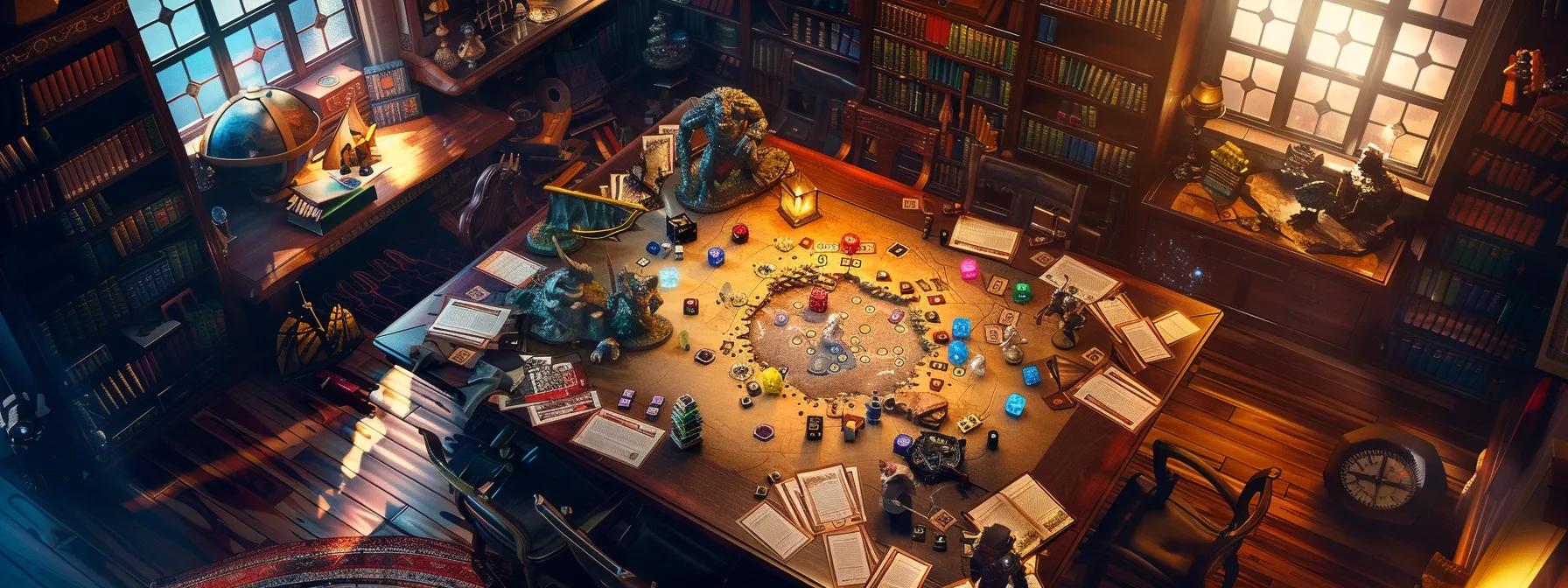
What Age Is Acceptable for Introducing DnD to Kids?
Key Takeaways
- This article explores how to determine the appropriate starting age for children in Dungeons & Dragons, emphasizing developmental readiness.
- It explains how to modify gameplay content for various age brackets and the cognitive, social, and creative benefits of DND for kids.
- Strategies for DM’ing kid-friendly games and handling sensitive topics in adventures are discussed.
- Guidance is provided on assessing mature content, creature encounters, and magic systems suitable for young players.
Determining the Suitable Starting Age for Young DND Players
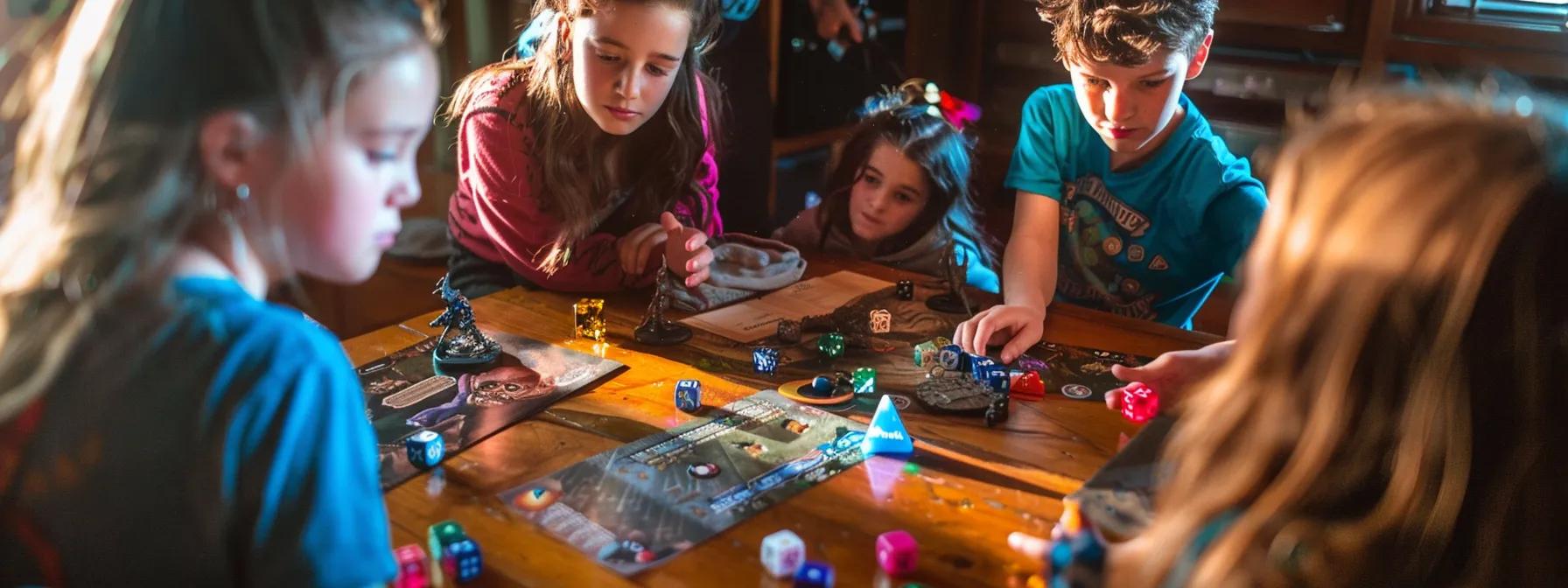
You can determine the right age for young players in Dungeons & Dragons by considering their developmental milestones, attention span, cognitive abilities, and consulting a dnd session checklist for overall preparedness. For additional insights, resources like fabletop.co can be useful in learning about game organization and dice storage. Recognizing milestones for DND readiness involves checking if a child can understand basic narrative structures, rules, and character roles, as well as maintain focus over a story. Many parents and educators consider introducing DND around the ages of 8 to 10 years; however, some children show readiness earlier based on their experience with storytelling and imaginative play, especially if they are natural dice-rollers. Assess a child’s maturity by observing their problem-solving skills and social interactions during play. Initiating the game with preschoolers or early elementary ages may require a simplified version that focuses on storytelling and cooperative play without heavy rules; using a session zero guide can help customize the experience for younger players. Additionally, for further insights into simplified game mechanics, some educators refer to tao of dice.
Modifying DND Content for Various Youthful Age Brackets
It’s essential to adapt rules and content so younger players can easily understand the game mechanics. It may also be beneficial to check guidance from tao of dice to ensure that the simplified rules still reflect strategic depth. This might involve reducing the complexity of character sheets and emphasizing narrative over numerical stats. It may help to consult the session zero guide when setting up the tone for your adventures.
Selecting age-appropriate adventure themes may mean using fairy-tale inspired quests with clear moral lessons rather than darker storylines, and you might find that a dnd session checklist ensures all narrative elements remain engaging and accessible. For more innovative resources, consider visiting fabletop.co to discover creative ways to adjust gameplay for kids. Handling combat in child-friendly dnd involves minimizing graphic details and simplifying conflict, so organizing your materials in dice storage can streamline game setup, allowing dice-rollers to remain focused on fun rather than complexity.
By weaving learning opportunities into the game, you can introduce basic mathematics, reading, and critical thinking through puzzles and quests. The goal is to strike a balance between engaging gameplay and rules that captivate without overwhelming young minds.
Advantages Children Gain From Playing Dungeons and Dragons
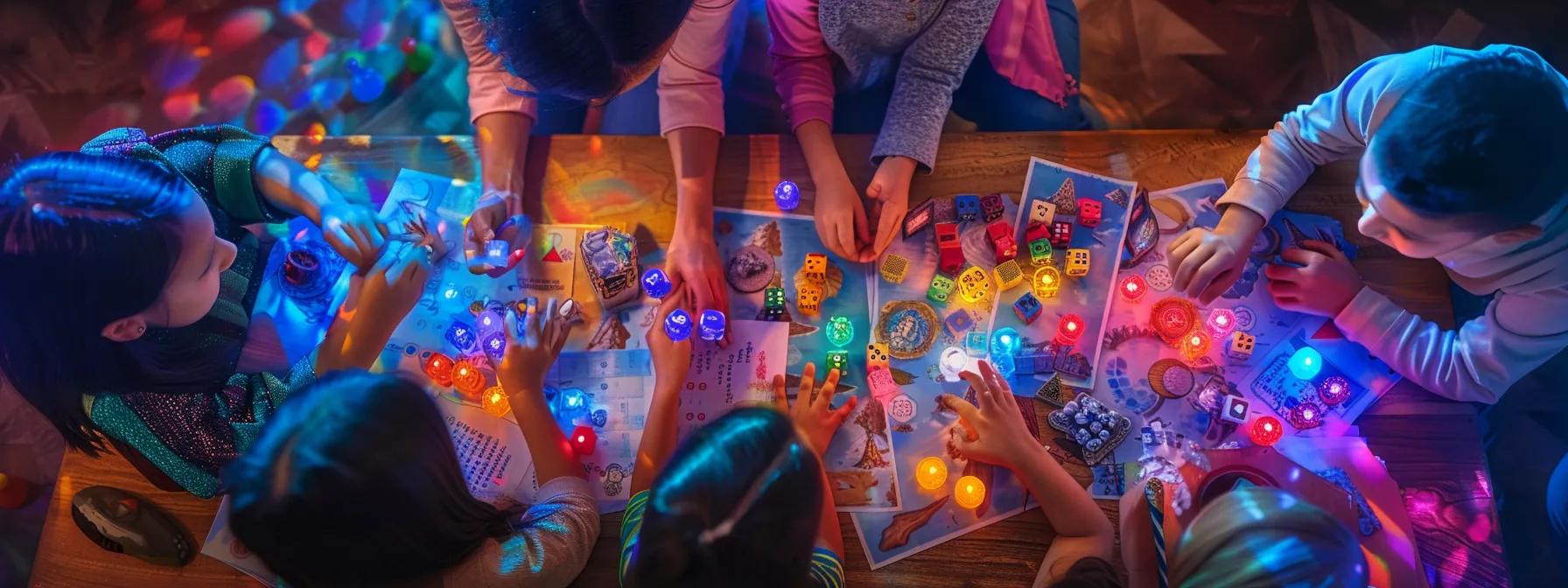
Dungeons & Dragons offers various benefits for children, starting with nurturing creative thought and imaginative abilities. The game encourages kids to create stories and solve problems using their imagination, which can improve creativity and narrative skills; many young players also explore resources on fabletop.co to fuel their passion for storytelling. It also cultivates problem-resolution and strategic thinking by challenging players to work as a team and make decisions that impact adventures; a session zero guide can be a useful tool to set the stage for collaborative gameplay.
DND fosters social interaction and empathy as children negotiate roles during gameplay, sometimes using dice-rollers to add elements of chance and excitement. Tracking hit points, interpreting rules, and reading campaign materials, or consulting a dnd session checklist, naturally enhance mathematical and reading skills. Additionally, children gain self-assurance by voicing their ideas and contributing to group storytelling, often motivated by insights from tao of dice, while practical tips such as using dice storage help keep their game essentials organized.
Overcoming Common Hurdles When Introducing DND to Children
Managing shorter attention spans in younger players is a common challenge; you might design sessions with clear beginning, middle, and end segments to keep them engaged. One effective strategy is to start with a session zero guide to set expectations and ease players into the game.
Addressing delicate subjects during play involves creating a safe space where questions and concerns can be openly discussed. Additionally, using a dnd session checklist ensures that every part of the session is organized and ready. To further streamline preparations, having organized dice storage can help maintain order and ensure that all materials are easily accessible. For added fun and smooth gameplay, consider assigning a few dice-rollers to lead mini contests or manage specific game elements.
To maintain interest, consider using dynamic story elements, interactive props, and scheduled breaks—perhaps drawing inspiration from tao of dice for creative twists. Finding or crafting age-fitting DND materials can be challenging, so using adapted rulebooks and custom scenarios designed for kids is advisable. For more resources and innovative ideas, checking out fabletop.co might provide additional insights, all while balancing the game’s spirit with simple mechanics that do not detract from the imaginative experience.
Effective Strategies for DMing DND Games for Kids
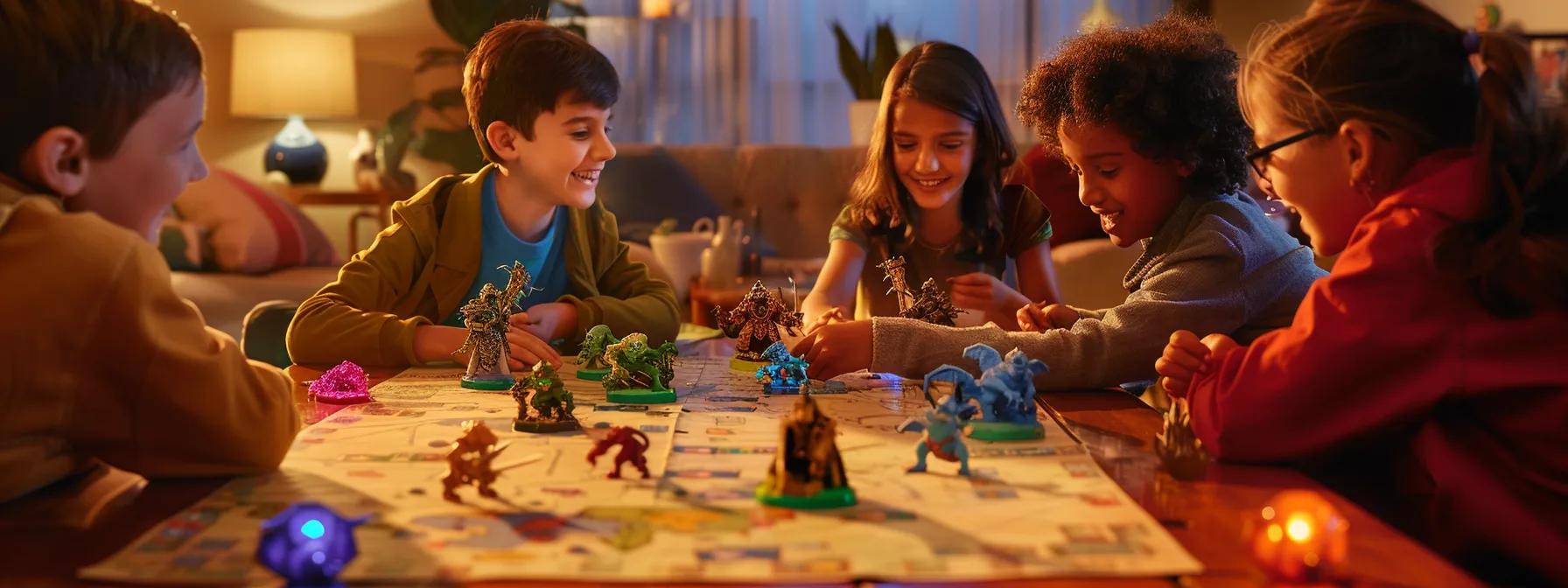
When DMing for kids, selecting ideal starter kits for family play is essential; these kits include simplified rules, pre-generated characters, and adventure modules targeted at a younger audience. Before beginning their adventures, consider using a session zero guide to introduce the game’s setting and create expectations. Invite children to create heroes that mirror their interests—such as a brave knight or clever wizard—and encourage them to shape their character’s background. To ensure a smooth start, use a dnd session checklist to cover all the initial steps. Use visuals and physical props like miniatures, hand-drawn maps, and costumes to bring fantasy concepts to life, perhaps even integrating a tao of dice approach to add tactile excitement during mini-games. Planning sessions of 30–45 minutes, perhaps interwoven with these mini-games, can match younger attention spans. Encourage every player to contribute by making decisions or suggesting plot twists, reinforcing that their ideas are vital to the story.
What Age Is Appropriate for DND Regarding Specific Game Elements
Reviewing official DND adventure books for mature content begins with checking content ratings and descriptors provided by publishers to ensure the game remains suitable for a young audience. Understanding DND content descriptors, including age recommendations and complexity ratings, is vital to maintain age-appropriate gameplay. To ease creature encounters, tone down the scariness of monsters or present them as misunderstood beings rather than outright villains. Choose magic systems that evoke wonder rather than fear by favoring colorful, narrative-driven spells over dark and ambiguous powers. Guiding children through moral decisions in adventures also provides a platform to discuss ethics in a safe, imaginative setting.
Table: Comparison of DND Content Modifications by Age Group
Before moving on, here is a table summarizing how you can adjust your DND game elements based on different age levels:
| Age Group | Rule Complexity | Theme/Narrative Focus | Visuals/Props Use | Combat & Conflict Approach |
|---|---|---|---|---|
| Preschool to Early Elementary | Simplified rules, minimal stats | Fairy-tale, moral stories | Many visuals, tactile props | Abstract, non-graphic conflict |
| Middle Childhood (8-10) | Streamlined core mechanics | Adventure with puzzles | Colorful maps and miniatures | Light combat with clear outcomes |
| Pre-Teens (11-13) | Moderate rule integration | Rich fantasy narratives with dilemmas | Detailed artwork and props | More structured combat, moderated intensity |
This table shows how modifications scale with developmental stages, ensuring gameplay remains enjoyable and accessible.
Frequently Asked Questions
Q: How can you tell if a child is ready for DND? A: Look for evidence of narrative understanding, problem solving, and social cooperation; children demonstrating these skills usually show readiness for DND.
Q: What is the ideal session length for young DND players? A: Sessions lasting 30–45 minutes are ideal, with frequent breaks and interactive segments to maintain engagement.
Q: How should combat be adapted for younger players? A: Combat should be simplified and presented in a non-graphic, abstract manner that emphasizes teamwork and creative problem-solving.
Q: Can children help create the storyline in DND? A: Yes, involving children in narrative decisions enhances engagement and nurtures their creative and collaborative skills.
Q: Are there specific DND starter kits for kids? A: There are family-friendly kits available that include simplified rules, pre-generated characters, and adventures tailored for kids.
Final Thoughts
Over the years, the evolution of D&D nerd culture shows how this once-niche hobby became a mainstream adventure for all ages.
Dungeons & Dragons can be a transformative experience for young players when introduced at the right age with tailored content. By recognizing developmental milestones and modifying rules and narratives, the game not only entertains but also nurtures creativity, social skills, critical thinking. D&D and Mental health benefits go hand in hand, as the game foster creativity and social connections beyond the table. Whether you’re a parent, guardian, or DM, adapting the game to suit your child’s maturity level sets the stage for memorable adventures and lifelong learning. Embrace the journey and let your imagination lead to a world where every dice roll inspires a new chapter in your child’s story.
And if friends can’t gather in person, playing D&D online ensures the adventure continues even when everyone’s apart.
To discover unique ways to enhance gameplay, check out some dice tower uses that add flair to your sessions.



